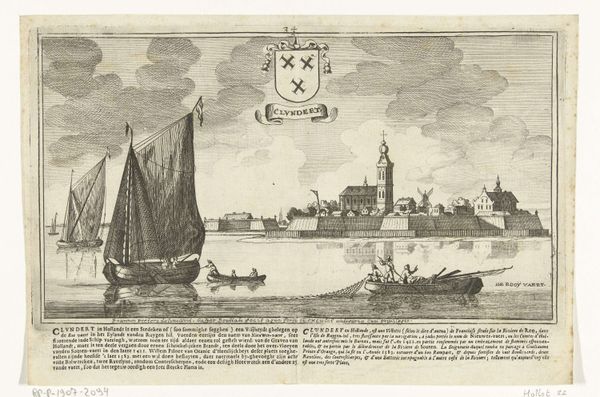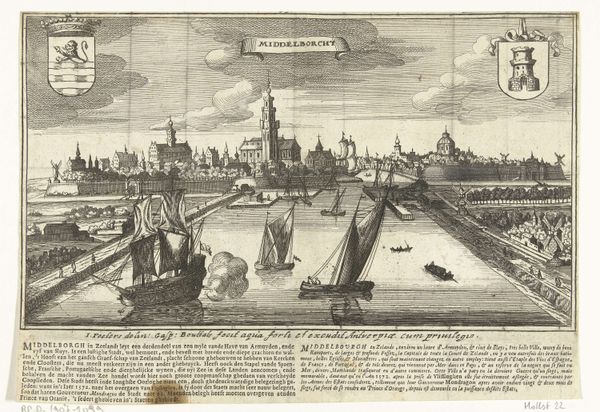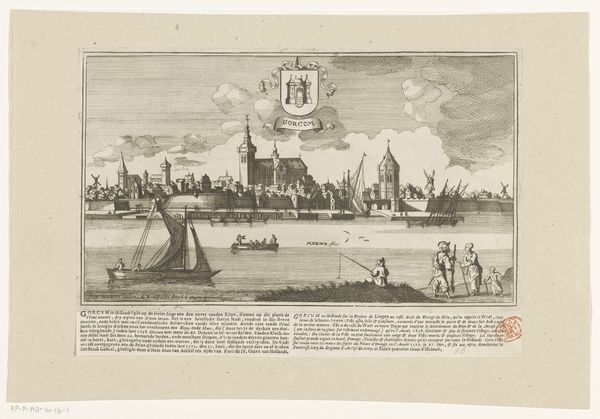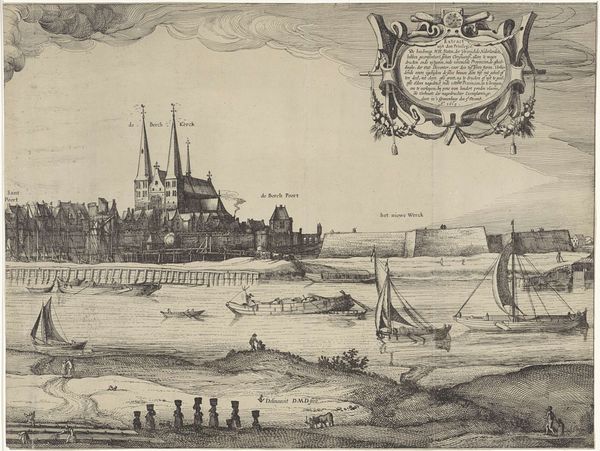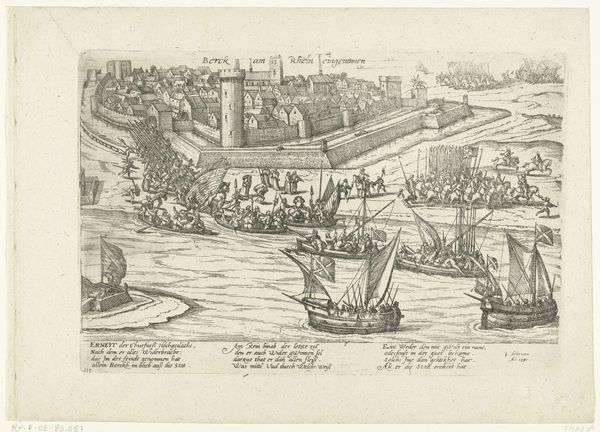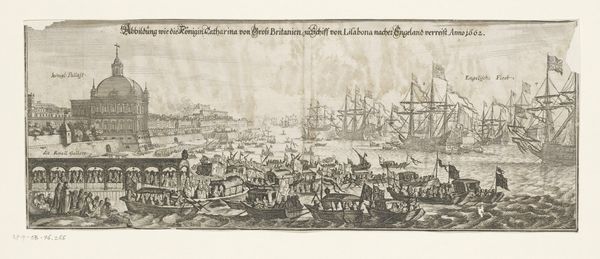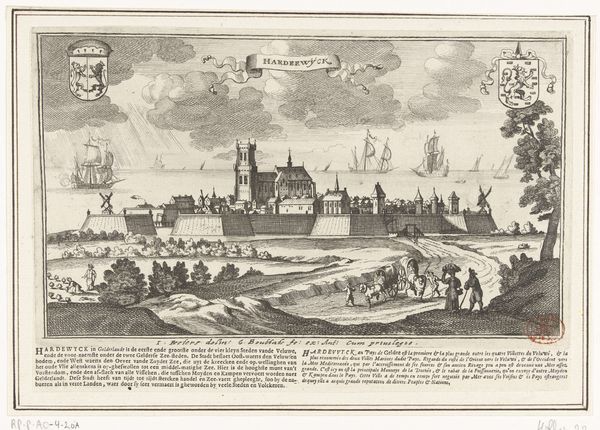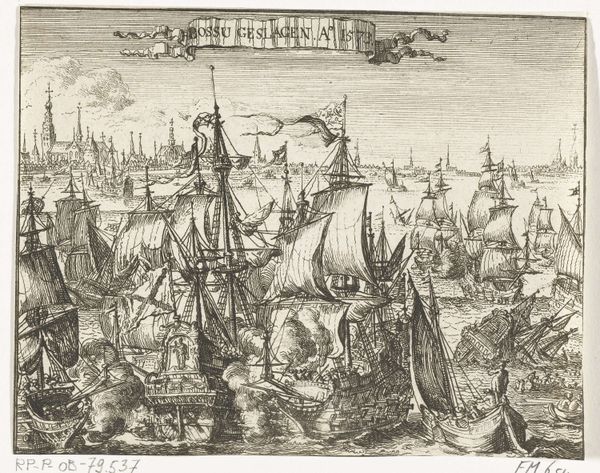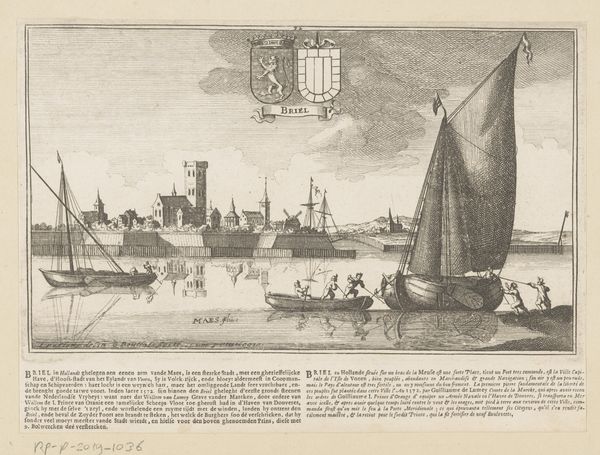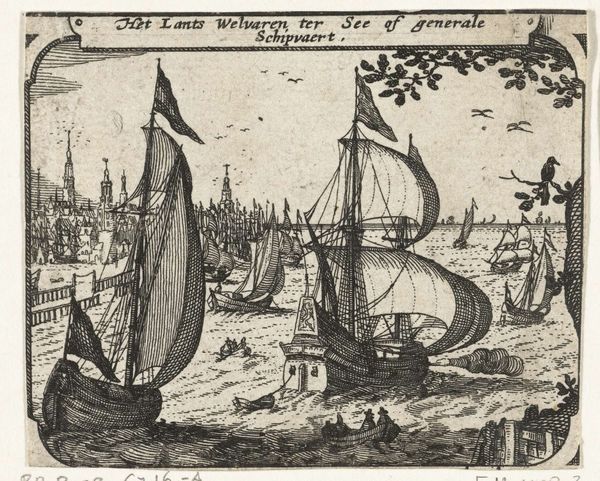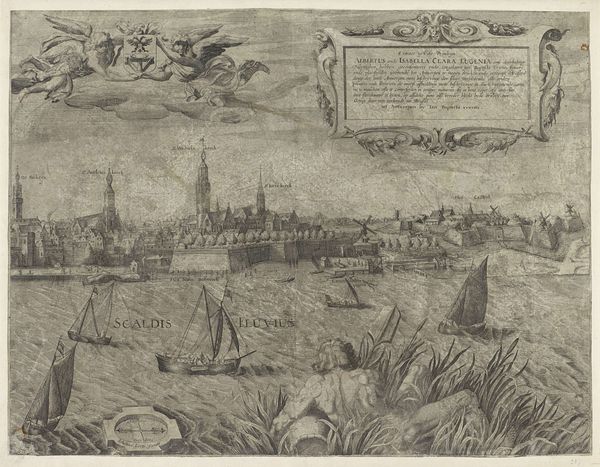
print, engraving
#
baroque
#
dutch-golden-age
# print
#
cityscape
#
engraving
Dimensions: height 166 mm, width 240 mm
Copyright: Rijks Museum: Open Domain
Curator: Welcome. We’re standing before Gaspar Bouttats’s 1679 engraving, "View of Deventer," currently held at the Rijksmuseum. It depicts a cityscape in the Dutch Golden Age style. Editor: It evokes a sense of calm industry. I am immediately struck by the contrast of the substantial, anchored ship and the delicate details of the city on the horizon. The muted palette and intricate lines lend the piece a historical depth. Curator: Precisely! This print provides a snapshot of Deventer, showcasing both its economic activity through the ships and its architectural significance through the detailed rendering of its skyline. It shows a town thriving through waterways as lines of movement. Do the figures have context here? Editor: Yes, these visual components aren’t just aesthetic; they also reinforce the socioeconomic and political hierarchy present during the Dutch Golden Age. The activity and traffic depicted by the figures signifies human impact on this geography and how populations adapt to waterways. What strikes me is the scale of the figures, reduced and anonymous. They emphasize not individuality but rather a labor force driving a global marketplace, and indeed how even cities can evolve to take a certain shape around such a force. Curator: An interesting point. There's a careful arrangement of elements—water, land, and architecture. It's as if Bouttats is suggesting a deliberate interplay. You mentioned labor, do you see any sense of progress encoded here, for example within the modes of transit themselves? Editor: Progress, yes, in terms of how trade infrastructure allowed colonial activities and expansions into other territories. What seems like bustling commerce on the surface has its roots in historical oppressions, wouldn't you agree? Curator: It is complex and multifaceted. Focusing just on how Deventer became a key hub reminds me of its earlier role as a medieval trading city. The visuals serve to capture the collective identity of that urban center, where history and daily life become almost indivisible. Editor: Ultimately, Bouttats offers us more than just a landscape, it opens conversations on social and economic histories of places that might at first seem quiet, but have contributed so greatly to historical flows of capital, labor, and cultural mixing. Curator: And perhaps, it provides an important space to further evaluate that layering as it persists in the collective consciousness.
Comments
No comments
Be the first to comment and join the conversation on the ultimate creative platform.
